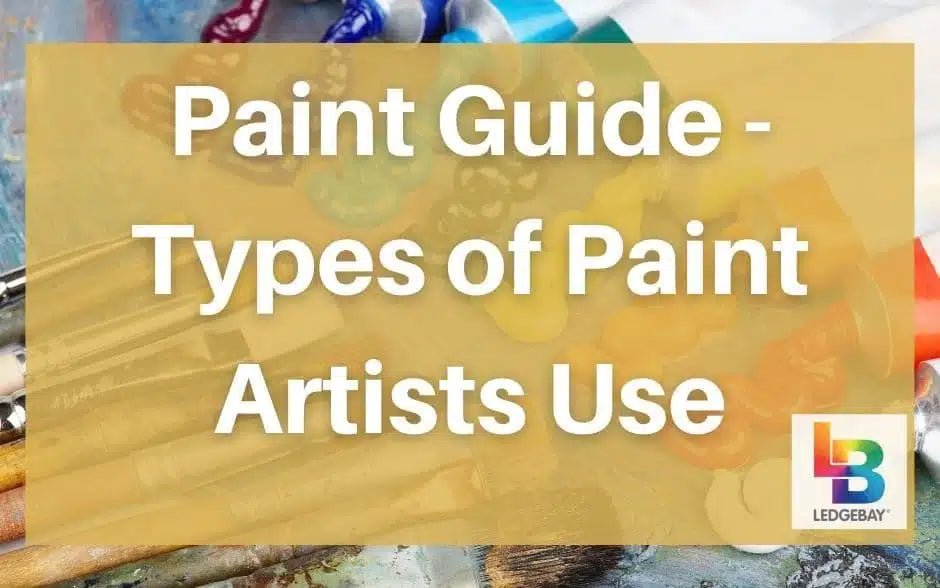Documenting the magical beauty of nature is the purpose of landscape drawing and sketching. Famous artists likeVincent van Gogh and ClaudeMonet used different shades to show the effect of light and express the feelings nature brings to them.
So if you’re still a beginner and want to learn about the best tips forsketching landscape , you’ve come to the right place. By following our tips and tricks, you’ll be able to create outstanding and captivatinglandscape paintings , so keep on reading.

Landscape drawing has been anestablished art for centuries , and several famous artists are well known for their landscape drawings and sketches that capture the natural beauty with a little effect from the artist to show his signature style.
The art of showing natural elements in apainting depends on how the artist relates to nature and the feelings they want to convey in their drawing. This is why artists usually followone of three methods to draw their landscape drawings.
Representational landscape drawing incorporates natural elements from nature without using any special effects or unusual colors. Instead, the artist believes in the beauty of nature the way it is and focuses on highlighting its magic.Paul Cézanne’s four apples is a clear example of this genre.
Impressionist artists focus on recreating a realistic scene in a surreal light that shows how the artist feels at this moment. The scene has elements from nature but looks magical due to the unusual use of light and shades.
In this artistic style, anartist will use bright colors , separate the background from the foreground, or use unusual lighting techniques. Examples ofthis artistic style include The Starry Night by Vincent van Gogh, Impression Sunrise by Monet, and Bridge at Villeneuve-la-Garenne by Alfred Sisley.
Abstract landscape drawing is themost modern genre of landscape painting , where the artist wants to show how a natural scene makes them feel using abstract shapes and unrealistic colors. The artist usually focuses on the environment around the natural scene rather than the scene itself.
In most cases, the artist highlights a single element by making it more prominent using an unrealistic scale or shade. Mitchell Albala and Rebecca Allan arefamous for this painting style.

If you’re interested in drawing and sketching tree branches, leaves, flowers, mountains, fields, and gardens, thenlearning landscape drawing and sketching skills is what you need. These beautiful elements have natural magic and beauty that is unmatched by any man-made object, and it’s your job as an artist to highlight this beauty and bring it out in a style that you feel comfortable with.
Sketchinglandscape paintings isn’t the most challenging type of art if you follow the tips and tricks that we will mention as they’re suggested by some of the world’s most famous experts. All you have to do is be patient and focus on a single landscape drawing style that works for you and makes you able to express your feelings and emotions as an artist.
[amazon box="B07RHD9VD1"]
What is your biggest inspiration? There are several elements around you, so you need to be picky about choosing your favorite subject.
Get out of your comfort zone and explore different locations and destinations to find the object that inspires you the most. Don’t be scared about exploring the unusual elements or even add a surreal element to your composition.
You can go to the park, zoo, or beach and explore different elements. Every scene can be explored in different ways, depending on yourfavorite painting technique. Man-made structures can also represent good inspiration, so you can explore the beauty of a bridge and the surrounding fields, the lights reflecting off the water at the harbor, and even animals in the backyard.
Try to find something that interests you. Focus on drawing moving objects to learn about the flow. You can go for a representational or impressionist style or even explore with the abstract technique if it appeals to you.
Sketching and drawing are all about your artistic freedom and your ability to express your emotions. Don’t be overwhelmed by the details, as your objective is to show your talent and not duplicate a natural scene.
The beauty of landscape drawing is that, unlike a portrait, you can try a realistic approach or an abstract one, and you’ll be able to create a beautiful sketch. You can add elements from your imagination, delete some, or make them more prominent.
You can also try the blind contour drawing. In this technique, you should focus on the subject and follow it with your eyes rather than concentrate on your paper or canvas. The subject you draw might not be accurate. But it will be a clear representation of how it makes you feel.
When it comes to art, there are no mistakes. Even if a line doesn’t make sense or doesn’t appear accurate to you, it can still be a crucial part of yourartistic composition . Moreover, mistakes help you fine-tune your technique as an artist.
Nature is vast, so which part are you going to include in your painting? Answering this question is sometimes the most difficult part an artist has to deal with. Luckily, there are some tools that can help you find the right part of the scene to focus on. You can either use a viewfinder or make one of plastic, cardboard, or wood.
Try to explore the scene from different angles to see how it looks. For example, move your body to view the scene from above or below for a new perspective.
After deciding on the scene, you need to choose one item to be your focal point. This will be the first item that your audience will notice about the painting. So, it only makes sense that you will spend more time and effort on painting it.
Nature scenes can sometimes be overwhelming with too many details that fill the drawing. This means that the painting can look too crowded, and you’ll spend a lot of time having it drawn. This is why you need to follow the 30/70 rule.
This rule means that 30% of yourdrawing should be devoted to one element and 70% devoted to another. If 70% of your composition focuses on the water and the light that reflects off it, 30% should be devoted to a boat and the plants around the lake.
You should also try to balance yourpainting by creating a visual depth. This is done using aerial perspective, so your painting doesn’t look flat and lifeless. Make sure that some of the elements in the foreground are big and act like a frame to the other elements that exist in the background.
A good way topaint landscape scenes is to highlight the flaws. Nature isn’t perfect, andtrying to fix the flaws will make your painting look unrealistic.
You need to highlight the irregular patterns and the natural variations that make every element unique. Every irregularity shows the individualism of similar elements, so you shouldn’t try to fix these imperfections. As a matter of fact, imperfect elements represent a bigger inspiration for artists. Highlighting the imperfections will make your drawing look more authentic and unique.
Start by looking for unique elements. A crooked tree trunk, a broken branch, or aflower with an unusualcolor can be the focal point of your painting .
If you’re interested in landscape drawing and sketching, you can start by following these simpletips and tricks . Of course, it takes time and practice, but soon enough, you’ll be creating breathtakinglandscape paintings .
CLICK HERE to browse our complete selection of high quality paint by numbers kits!
So if you’re still a beginner and want to learn about the best tips forsketching landscape , you’ve come to the right place. By following our tips and tricks, you’ll be able to create outstanding and captivatinglandscape paintings , so keep on reading.
Different Types of Landscape Drawing

Landscape drawing has been anestablished art for centuries , and several famous artists are well known for their landscape drawings and sketches that capture the natural beauty with a little effect from the artist to show his signature style.
The art of showing natural elements in apainting depends on how the artist relates to nature and the feelings they want to convey in their drawing. This is why artists usually followone of three methods to draw their landscape drawings.
Representational landscape drawing incorporates natural elements from nature without using any special effects or unusual colors. Instead, the artist believes in the beauty of nature the way it is and focuses on highlighting its magic.Paul Cézanne’s four apples is a clear example of this genre.
Impressionist artists focus on recreating a realistic scene in a surreal light that shows how the artist feels at this moment. The scene has elements from nature but looks magical due to the unusual use of light and shades.
In this artistic style, anartist will use bright colors , separate the background from the foreground, or use unusual lighting techniques. Examples ofthis artistic style include The Starry Night by Vincent van Gogh, Impression Sunrise by Monet, and Bridge at Villeneuve-la-Garenne by Alfred Sisley.
Abstract landscape drawing is themost modern genre of landscape painting , where the artist wants to show how a natural scene makes them feel using abstract shapes and unrealistic colors. The artist usually focuses on the environment around the natural scene rather than the scene itself.
In most cases, the artist highlights a single element by making it more prominent using an unrealistic scale or shade. Mitchell Albala and Rebecca Allan arefamous for this painting style.
Best 5 Tips to Boost Your Landscape Drawing and Sketching Skills

If you’re interested in drawing and sketching tree branches, leaves, flowers, mountains, fields, and gardens, thenlearning landscape drawing and sketching skills is what you need. These beautiful elements have natural magic and beauty that is unmatched by any man-made object, and it’s your job as an artist to highlight this beauty and bring it out in a style that you feel comfortable with.
Sketchinglandscape paintings isn’t the most challenging type of art if you follow the tips and tricks that we will mention as they’re suggested by some of the world’s most famous experts. All you have to do is be patient and focus on a single landscape drawing style that works for you and makes you able to express your feelings and emotions as an artist.
1. Find Your Inspiration
[amazon box="B07RHD9VD1"]
What is your biggest inspiration? There are several elements around you, so you need to be picky about choosing your favorite subject.
Get out of your comfort zone and explore different locations and destinations to find the object that inspires you the most. Don’t be scared about exploring the unusual elements or even add a surreal element to your composition.
You can go to the park, zoo, or beach and explore different elements. Every scene can be explored in different ways, depending on yourfavorite painting technique. Man-made structures can also represent good inspiration, so you can explore the beauty of a bridge and the surrounding fields, the lights reflecting off the water at the harbor, and even animals in the backyard.
Try to find something that interests you. Focus on drawing moving objects to learn about the flow. You can go for a representational or impressionist style or even explore with the abstract technique if it appeals to you.
2. Be Free
Sketching and drawing are all about your artistic freedom and your ability to express your emotions. Don’t be overwhelmed by the details, as your objective is to show your talent and not duplicate a natural scene.
The beauty of landscape drawing is that, unlike a portrait, you can try a realistic approach or an abstract one, and you’ll be able to create a beautiful sketch. You can add elements from your imagination, delete some, or make them more prominent.
You can also try the blind contour drawing. In this technique, you should focus on the subject and follow it with your eyes rather than concentrate on your paper or canvas. The subject you draw might not be accurate. But it will be a clear representation of how it makes you feel.
When it comes to art, there are no mistakes. Even if a line doesn’t make sense or doesn’t appear accurate to you, it can still be a crucial part of yourartistic composition . Moreover, mistakes help you fine-tune your technique as an artist.
3. Pick Your Focus
[amazon box="B001DKMZNG"]Nature is vast, so which part are you going to include in your painting? Answering this question is sometimes the most difficult part an artist has to deal with. Luckily, there are some tools that can help you find the right part of the scene to focus on. You can either use a viewfinder or make one of plastic, cardboard, or wood.
Try to explore the scene from different angles to see how it looks. For example, move your body to view the scene from above or below for a new perspective.
After deciding on the scene, you need to choose one item to be your focal point. This will be the first item that your audience will notice about the painting. So, it only makes sense that you will spend more time and effort on painting it.
4. Create Balance
Nature scenes can sometimes be overwhelming with too many details that fill the drawing. This means that the painting can look too crowded, and you’ll spend a lot of time having it drawn. This is why you need to follow the 30/70 rule.
This rule means that 30% of yourdrawing should be devoted to one element and 70% devoted to another. If 70% of your composition focuses on the water and the light that reflects off it, 30% should be devoted to a boat and the plants around the lake.
You should also try to balance yourpainting by creating a visual depth. This is done using aerial perspective, so your painting doesn’t look flat and lifeless. Make sure that some of the elements in the foreground are big and act like a frame to the other elements that exist in the background.
5. Pay Attention to the Flaws
A good way topaint landscape scenes is to highlight the flaws. Nature isn’t perfect, andtrying to fix the flaws will make your painting look unrealistic.
You need to highlight the irregular patterns and the natural variations that make every element unique. Every irregularity shows the individualism of similar elements, so you shouldn’t try to fix these imperfections. As a matter of fact, imperfect elements represent a bigger inspiration for artists. Highlighting the imperfections will make your drawing look more authentic and unique.
Start by looking for unique elements. A crooked tree trunk, a broken branch, or aflower with an unusualcolor can be the focal point of your painting .
Landscape Drawing - Wrap Up
If you’re interested in landscape drawing and sketching, you can start by following these simpletips and tricks . Of course, it takes time and practice, but soon enough, you’ll be creating breathtakinglandscape paintings .
CLICK HERE to browse our complete selection of high quality paint by numbers kits!











